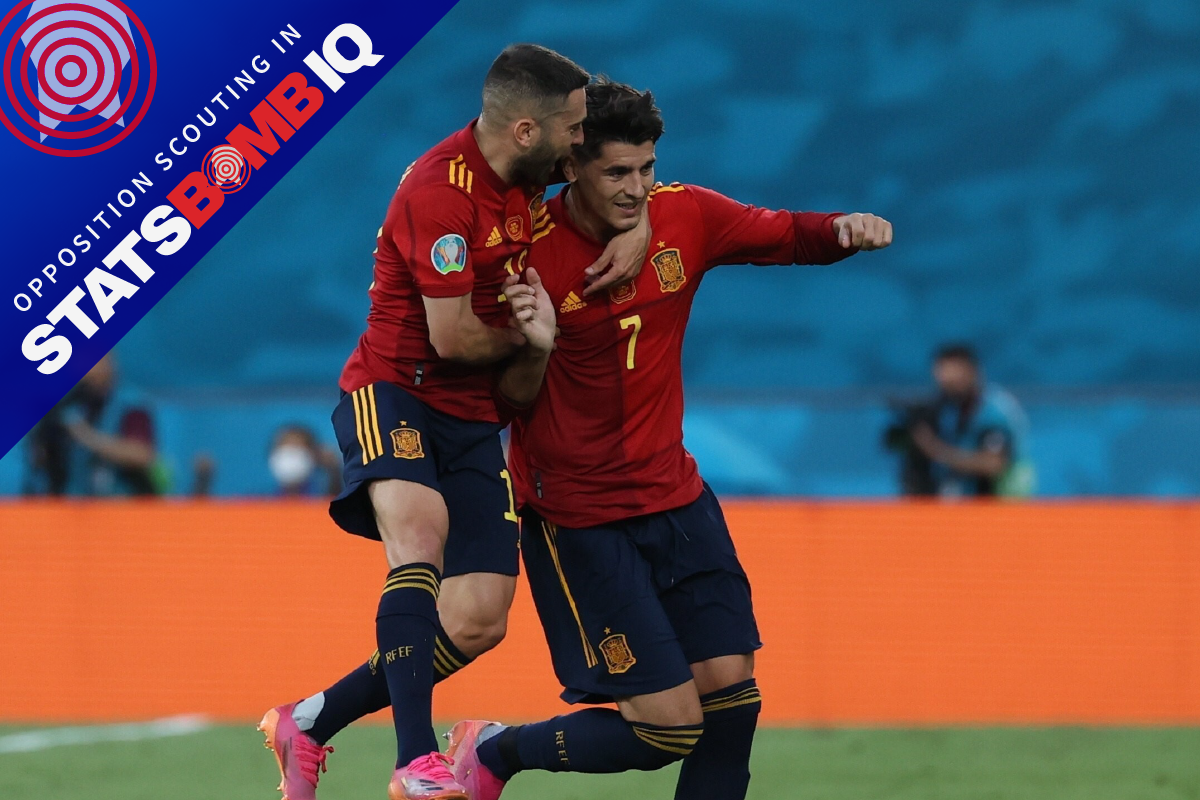Data has become an integral part of team and opposition analysis in the modern game. Creating a repeatable and automated process can quickly identify trends and insight, saving valuable time for the busy analyst. Teams and federations use StatsBomb IQ to support their team and opposition analysis, exploiting edges found in the platform to secure victory over their opponents every matchday.
Let’s demonstrate how this can be done by looking ahead to the Spain vs Switzerland quarter-final at Euro 2020.
SPAIN
Spain qualified from Group E in 2nd place – failing to beat Sweden or Poland in their opening games of the tournament before a 5-0 thumping of Slovakia in the deciding match secured their advance to the knockouts.
The 0-0 and 1-1 draws versus Sweden and Poland quickly reiterated the stylistic approach we’ve come to expect from La Roja; possession-based, territorially-dominant football. There were flaws in both performances, sure, but Spain did enough to suggest they’d win both games more often than not. They failed to score from chances worth 1.92 xG versus Sweden and netted a score draw against Poland despite ‘winning’ the shot count 12-5 and creating 2.25 xG to Poland’s 0.58.
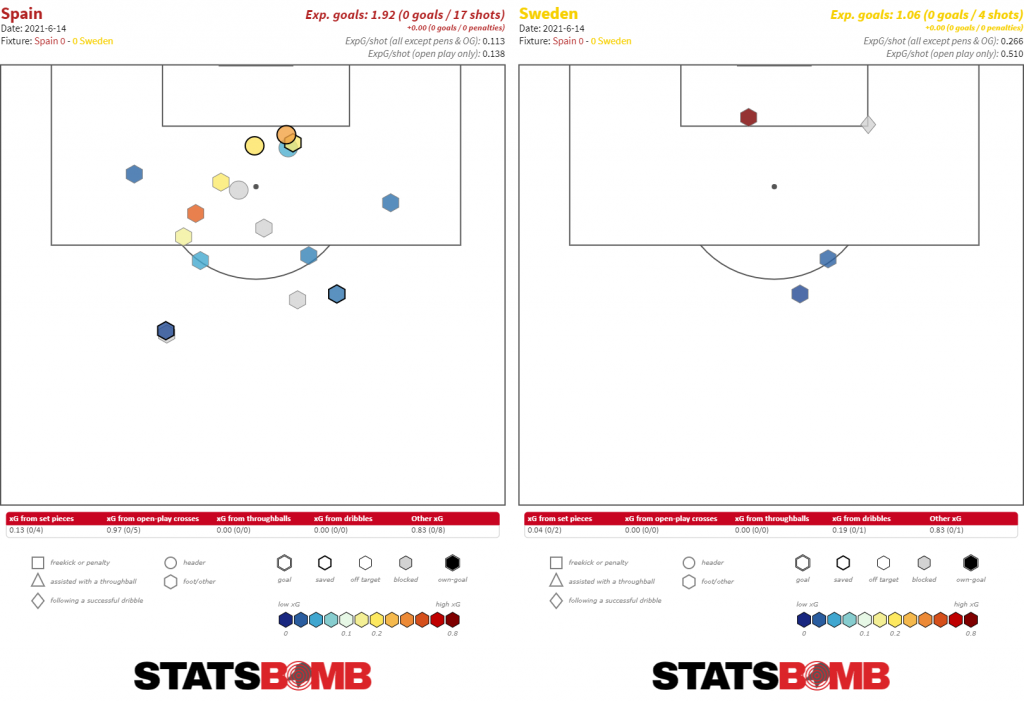
Slovakia were then on the receiving end of Spain’s frustrations in the 5-0 thrashing, before a chaotic first knockout round versus Croatia exposed defensive frailties identified by observers earlier on in the tournament. For all the control Spain had exerted over their opponents in the group stage, they struggled for it when it mattered most against Croatia. In the final ten minutes of the match, Croatia’s tenacity and determination saw them overturn the 3-1 lead Spain were holding onto, forcing two late goals to take the tie into extra time.
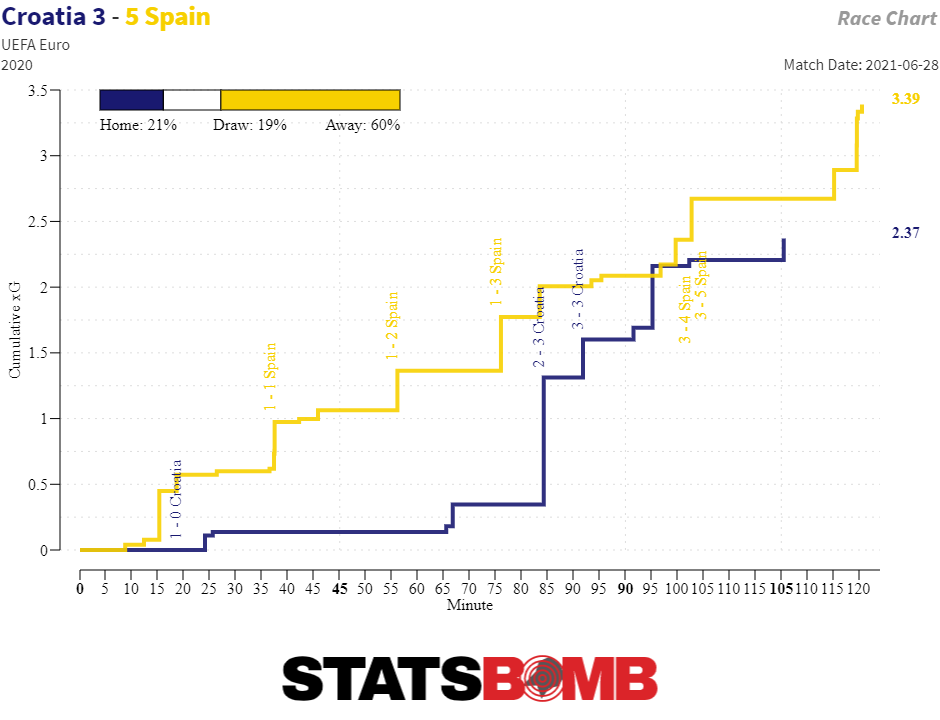
La Roja’s strengths and weaknesses were on display in their first four games of the tournament. Here’s what we might expect to see versus Switzerland. Build-Up & Attacking Phase Spain have so far had the shortest average goalkeeper pass length at the tournament at just 26.3m, with Unai Simón showing a preference for distributing the ball to the right-hand side of the defence.
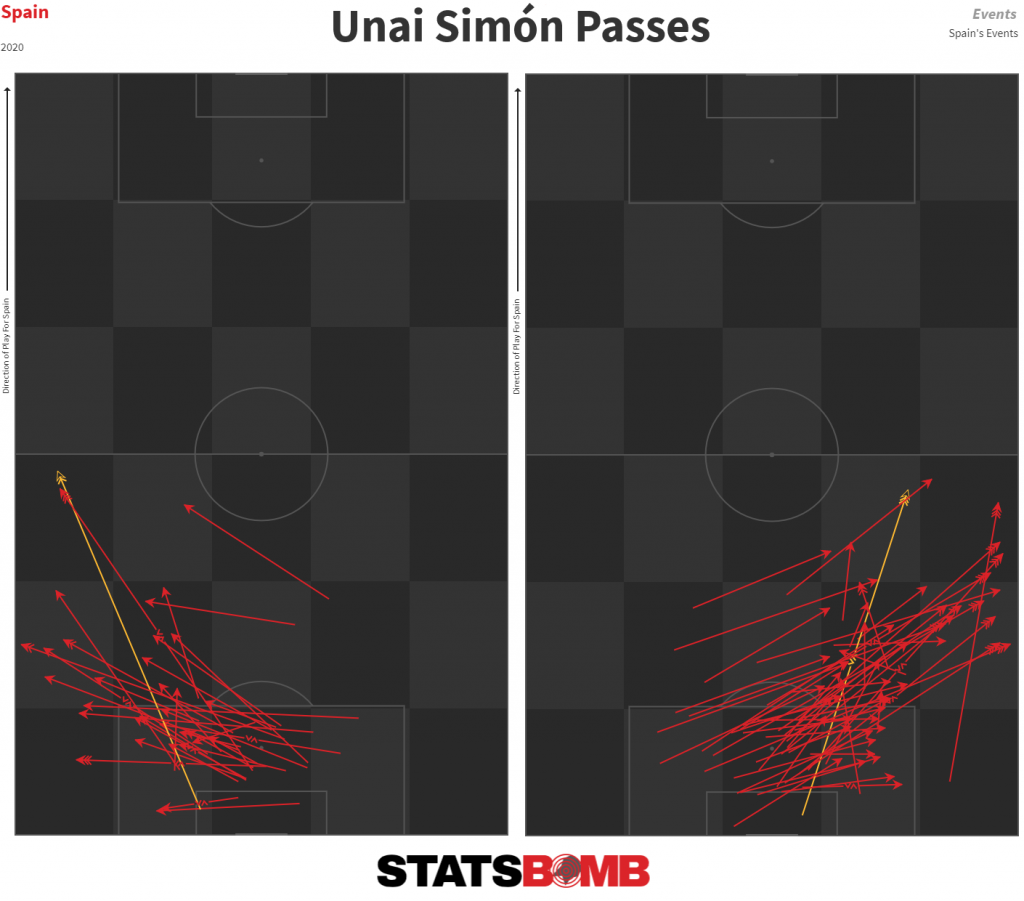
Unsurprisingly, they’ve averaged the highest possession in the tournament, with 73% of the ball in their four fixtures. Their attempts to pass their way into the goal has seen them come out with the slowest Pace To Goal – the average speed of build-up, in m/s, for possessions that end in shots – of all the teams that qualified for the knockout stage.
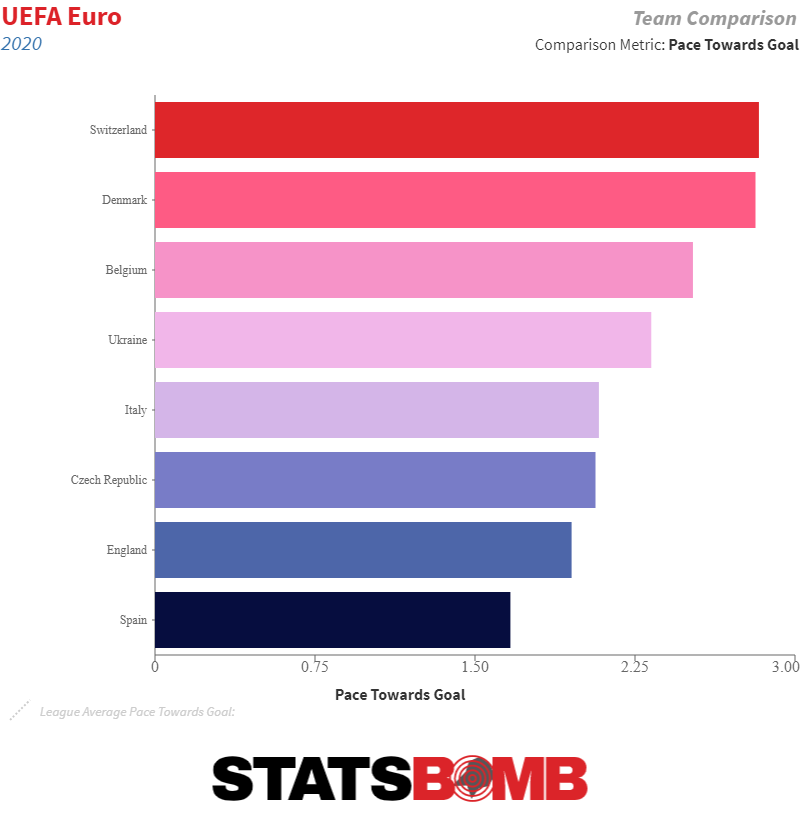
Their controlled build-up means they’ve entered the final third more often than any team at the tournament at 85.7 entries per 90. Seeing as they’re spending so much time there, let’s dig into what they’re doing with the ball in the attacking third.
In open play, they’ve played 670 passes originating in the final third (not including the penalty area). They played 127 (20%) back out of the final third, so 80% of the passes stayed within that area of the pitch. What’s surprising is that 105 passes (15%) attempted to enter the box. On average, Spain play six passes in the final third before they attempt a pass into the box.
Of these 105 attempts, only 41 succeeded. Of the tournament quarter-finalists, Denmark and Italy have more penalty box pass entries, and they manage it in fewer passes. Spain’s possession play results in a large amount of the territory, but it does mean they struggle to penetrate at times, with them almost always playing against a set defence.
With the set defences in mind, it’s perhaps unsurprising to say that Spain’s most effective route into the box has been through crossing, but it’s certainly surprising given their overall approach. 36% of Spain’s successful penalty box entries have come from a cross, the highest percentage from teams that qualified from the group stage.
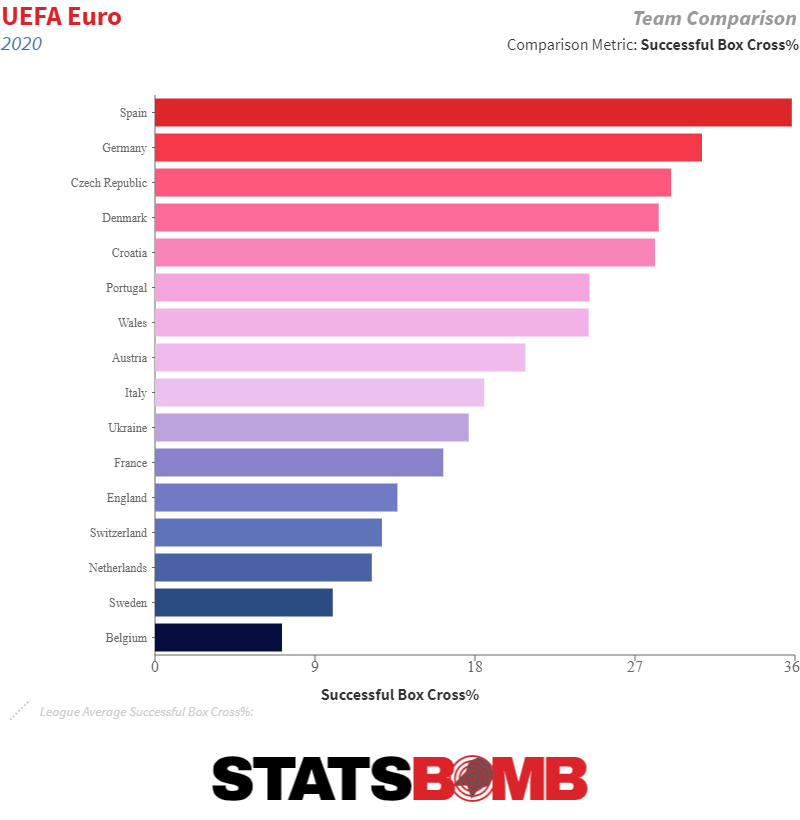
It’s important to know what Switzerland might be facing in this regard. Examining the start locations of Spain’s crosses indicates a couple of trends.
From the left, their crosses tend to originate from wider and deeper positions. From the right, they’ve been far more successful at penetrating the “cutback zone” – the byline inside the penalty area.
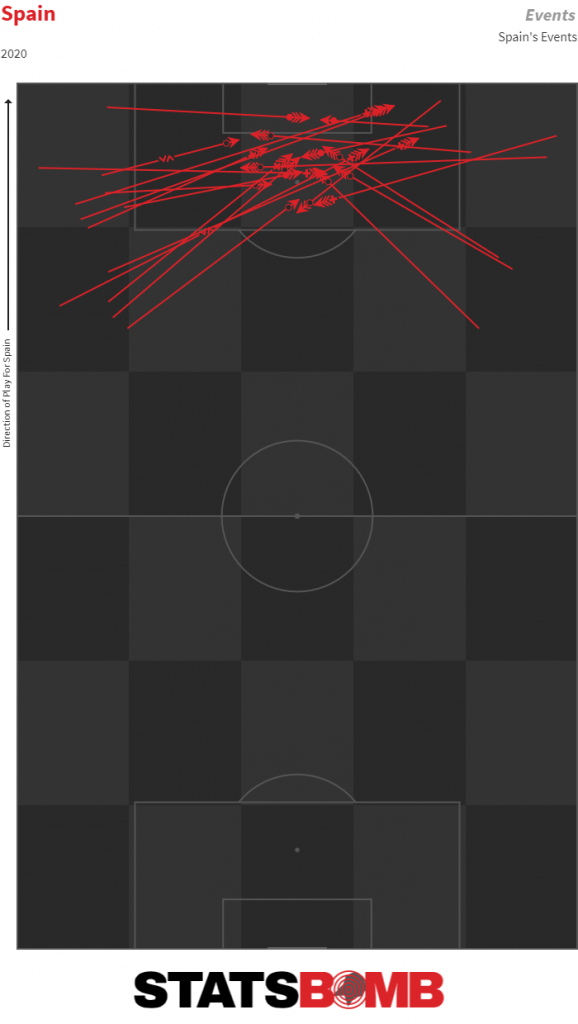
Looking at key players now, Pedri has arguably been Spain’s best player in Euro 2020, one of only three Spanish players to play every minute at the Euros so far despite this being his first tournament at the age of 18.
His positive approach to the game has seen him move the ball into the attacking third more than any of his teammates, second only to Toni Kroos across the entire tournament.
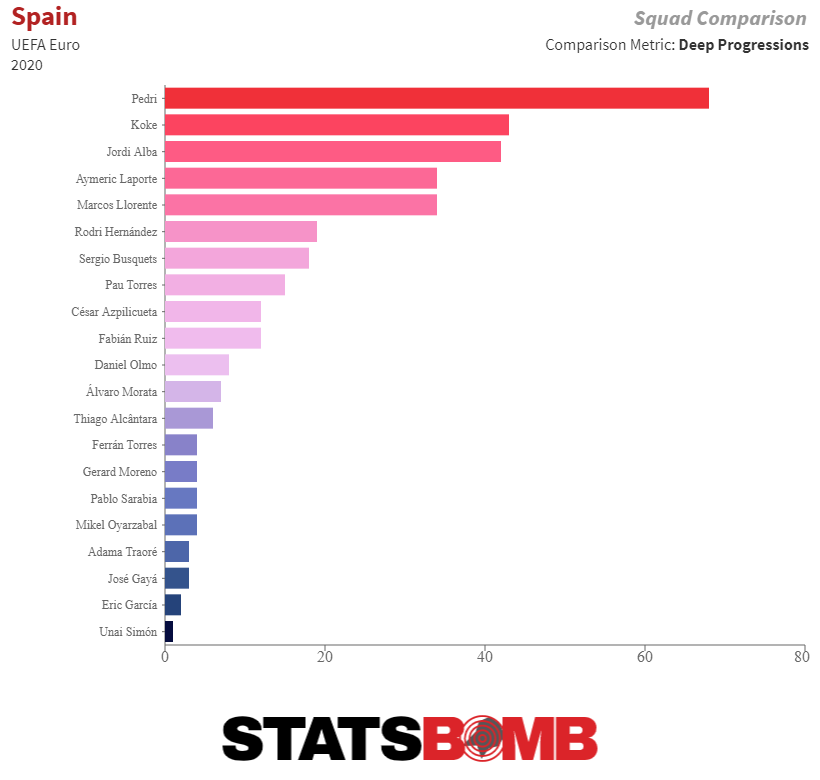
He’s also played the most passes within the final third, showing an ability to find space and show for the ball in attacking areas, whilst also looking for the forward pass when on the ball in there. 29% of his final third passes have been played forwards.
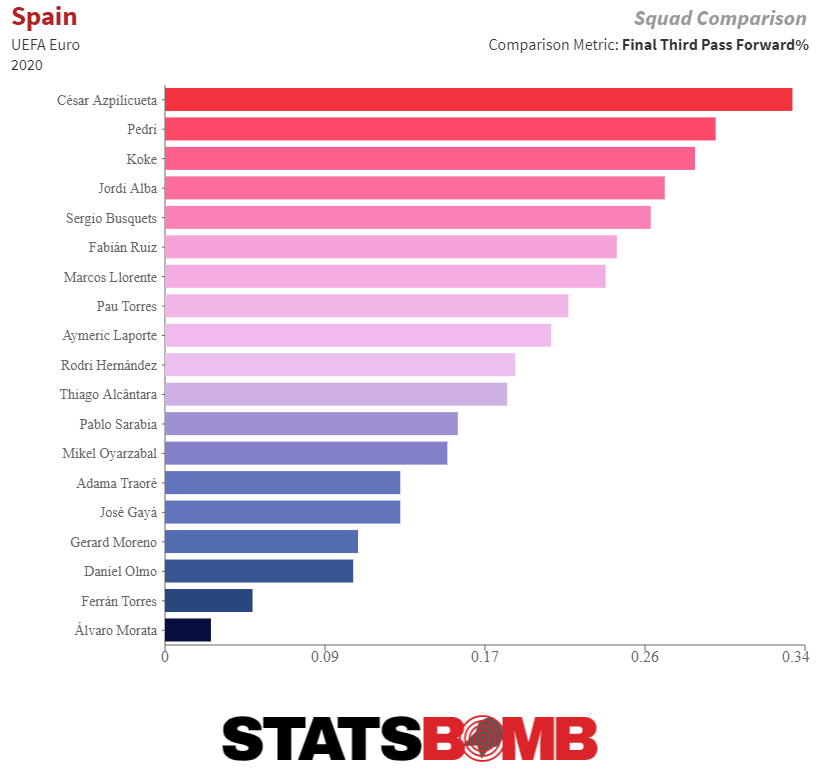
Of course, to focus on Pedri would be to ignore the many threats Spain have in possession, and it’s worth noting that it’s Jordi Alba who’s played the most passes into the penalty area of their squad. He could come back into the XI more fresh after starting on the bench versus Croatia.
Defensive Approach
Spain’s game is all about territory, which means as soon as they turn the ball over, they’re going to look to counterpress the new possession to force a turnover, prevent the counter, or keep the play away from their half.
As if opposition possession is the matador, Spain’s Aggression % (the proportion of opponent pass receipts that are pressured, tackled, or fouled within 2 seconds) is the highest of the 16 knockout teams at 25%. Their Defensive Distance – the average distance from a team’s own goal from which it makes a defensive action – of 51.6m is also the highest in the knockout stages. Expect Spain to pin Switzerland back should the Swiss not find a path out of the press. Speaking of which, one of Spain’s major weaknesses – as it is for many high-pressing teams – is what happens when the opposition breaks their press.
The best chances Spain have conceded in the tournament so far have come when their opponents have waited for their opportunity and then attacked at pace with the Spanish defence pulled out of position.
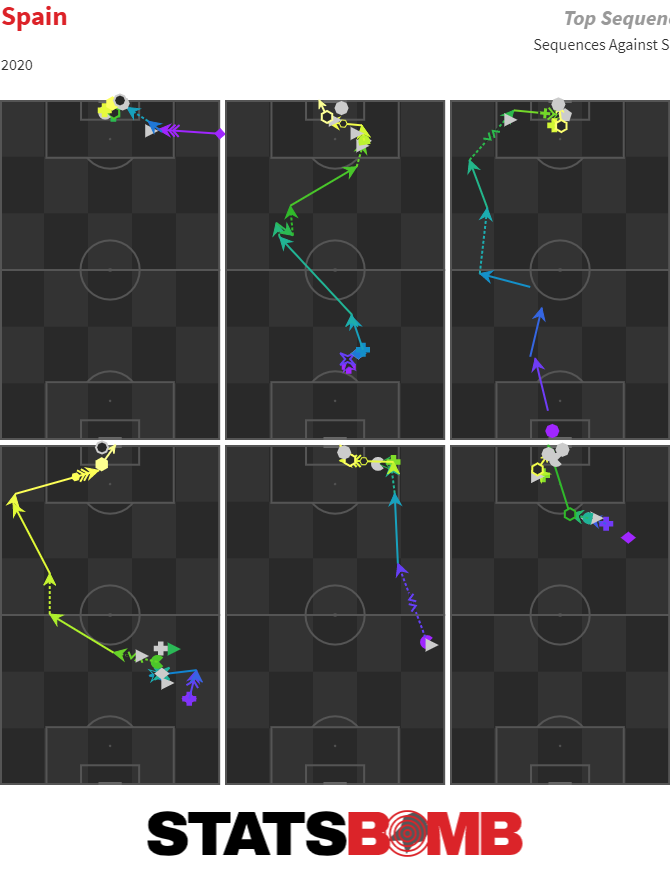
It’s definitely a positive that Spain have conceded the joint-fewest Shots in the tournament, but a tournament-high xG/per shot conceded of 0.18 demonstrates that it is possible to create clear-cut opportunities against them. The average distance from goal of the shots conceded is 14.4m - a tournament-low compared to their quarter-final rivals.
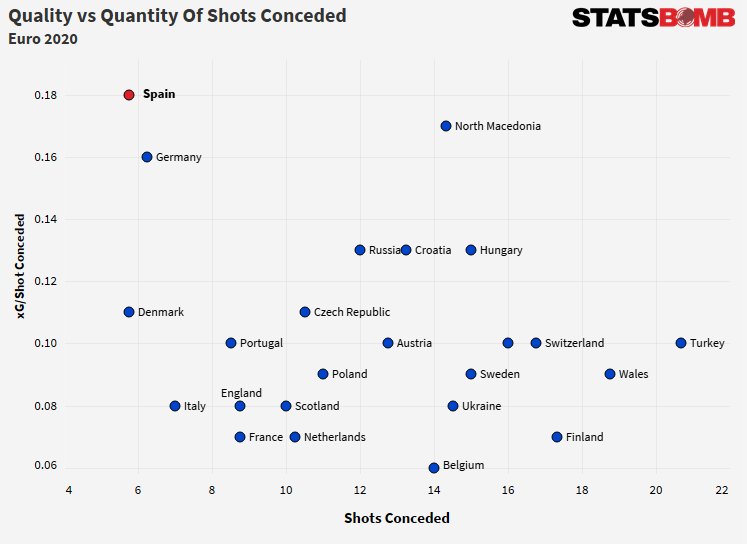
SWITZERLAND
Qualifying from their group as one of the best 3rd-place finishers meant Switzerland had to beat World Cup holders and pre-tournament favourites France on penalties in the first knockout round to reach this stage.
In truth, their group stage performances were better than the 3rd-place qualifier tag would suggest. They were comfortably beaten by a good-looking Italy, but comfortably beat an ugly Turkey and outclassed an organised Wales. The latter held them to a draw when Switzerland looked the likely winners.
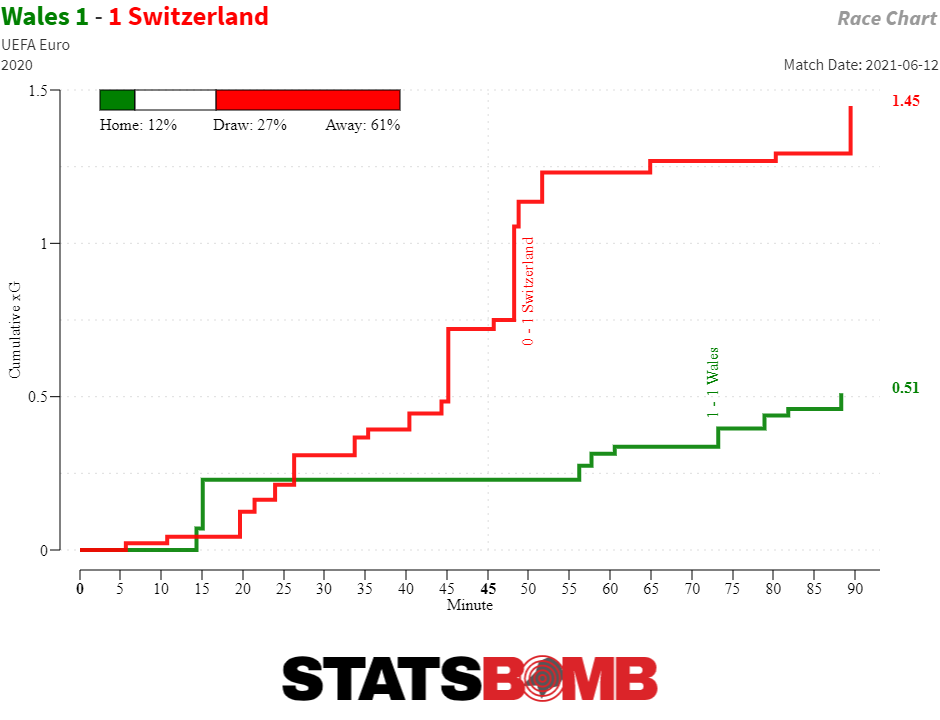 Both performances suggested there was enough about this Switzerland side to cause issues for whomever they drew in the first knockout round, which France certainly found out to their cost.
Both performances suggested there was enough about this Switzerland side to cause issues for whomever they drew in the first knockout round, which France certainly found out to their cost.
Build Up & Attacking Phase
Switzerland tend to mix it up more than their opposition in this match when playing from the back. Their average goalkeeper pass length of 32m is lower than most of their quarter-final rivals, but Yann Sommer’s goal kicks map displays a flexible approach to their play out from the back. Twenty-five of his goal kicks have been Ground passes to a nearby teammate, whereas 18 have been played off the ground to achieve more distance, logged as a Low (above ankle but below shoulder height) or High Pass by StatsBomb’s pass height information.
It's likely Switzerland will play longer from the back versus Spain to play over the press and force the game up the pitch.
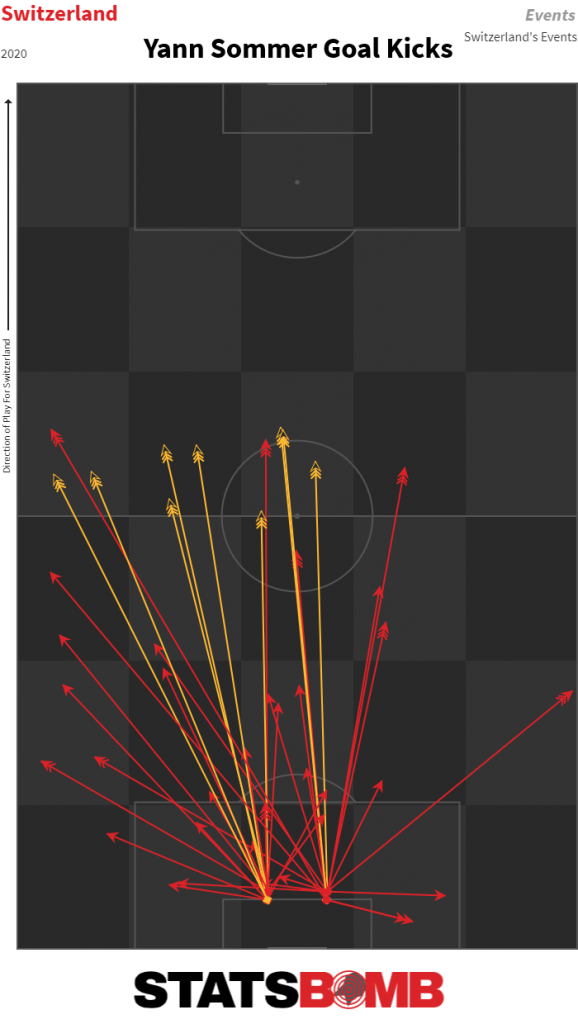
Switzerland look to move the ball through the thirds at a much higher tempo than their quarter-final opponents. Rossocrociati have the fastest Pace To Goal of the quarter-final teams, moving the ball towards goal at 2.8m/s on average in possessions that ended in a shot.
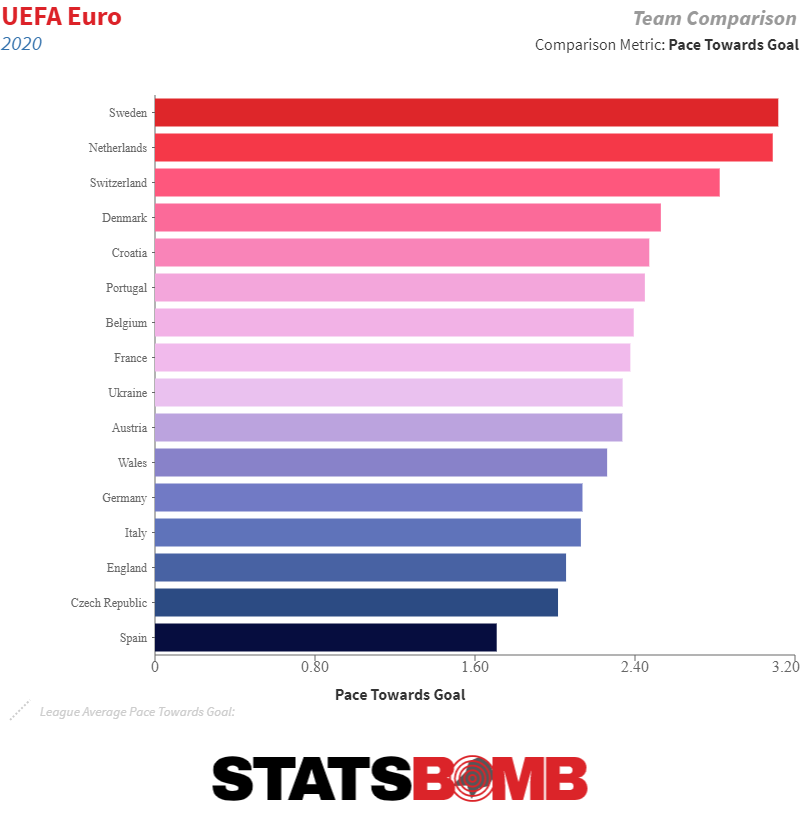
Their matches have also been high pace in a different sense. Games involving Switzerland have seen the largest shot volumes in the tournament, amassing 31.5 shots per game on average with their opponents. Switzerland are a volume team rather than one that values a high-quality chance – their average Shot Distance of 17.3m is the 2nd-furthest of the quarter-finalists, and their 0.08 xG/shot is the worst rate of that group.
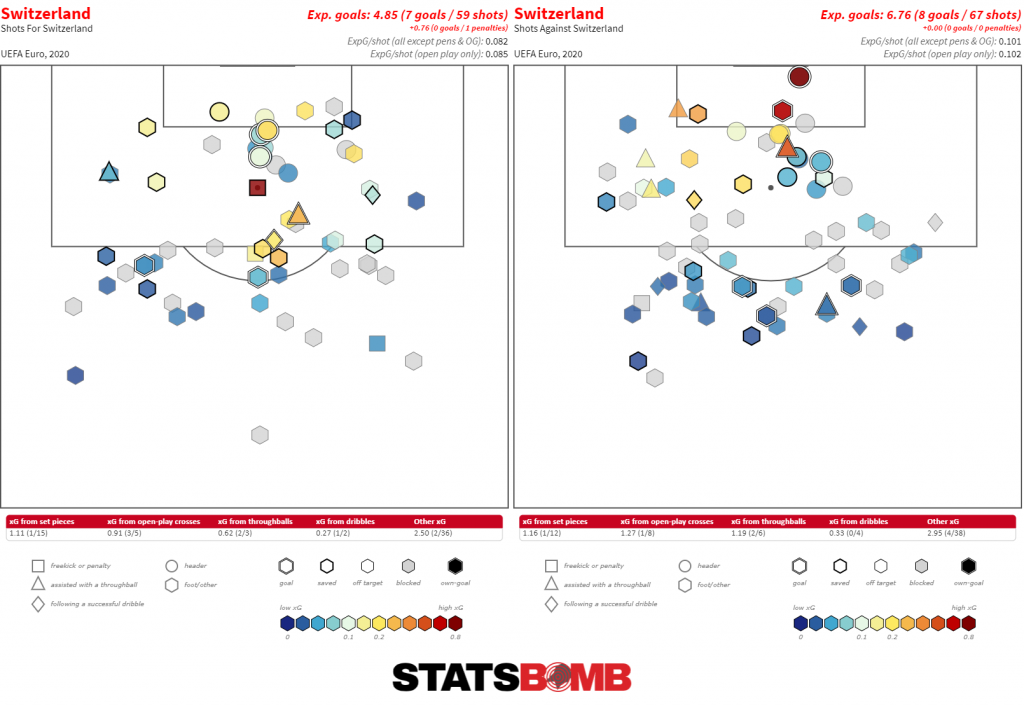
The wing-backs tend to be the best outlets for getting the ball into the final third: of Switzerland’s 116 passes into the attacking third in the tournament, 78 of them were received on the flanks.
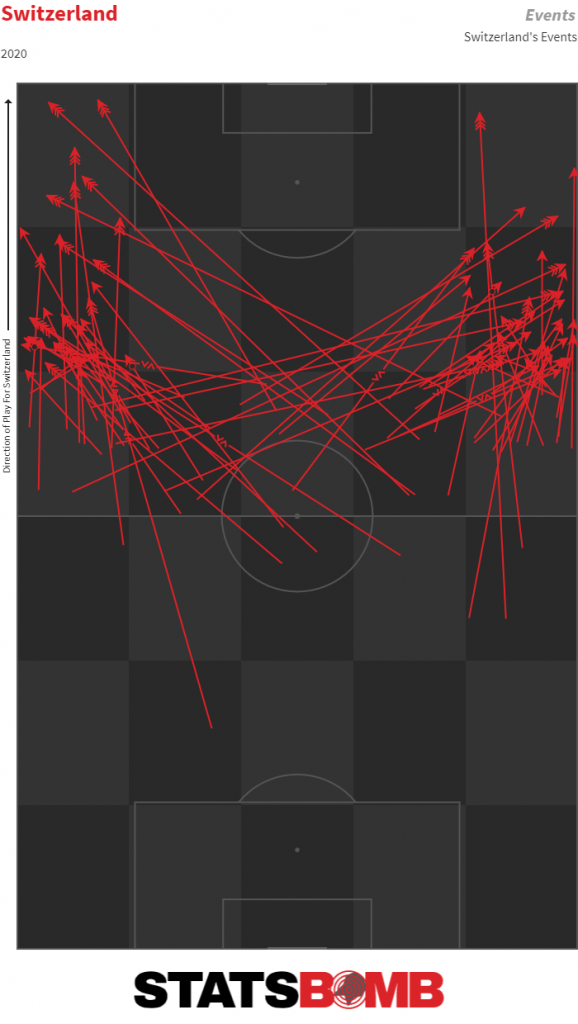
That’s not to say their play is entirely funnelled out to the wings: Xherdan Shaqiri and Breel Embolo are both impressive technicians in central areas. But, Kevin Mbabu and particularly Steven Zuber have impressed as attacking outlets in the wing-back roles – Zuber has four assists from open play already, leading the tournament for goals created.
They'll have to do it without their most capable progressor of the ball. Granit Xhaka's suspension means Switzerland will be without the player who's been trusted to play the most passes in the squad, has completed the most long balls, and has played the ball into the final third more than anyone else in the Swiss team. The pass network versus France emphasises Xhaka as the most frequent and valuable passer in the team.
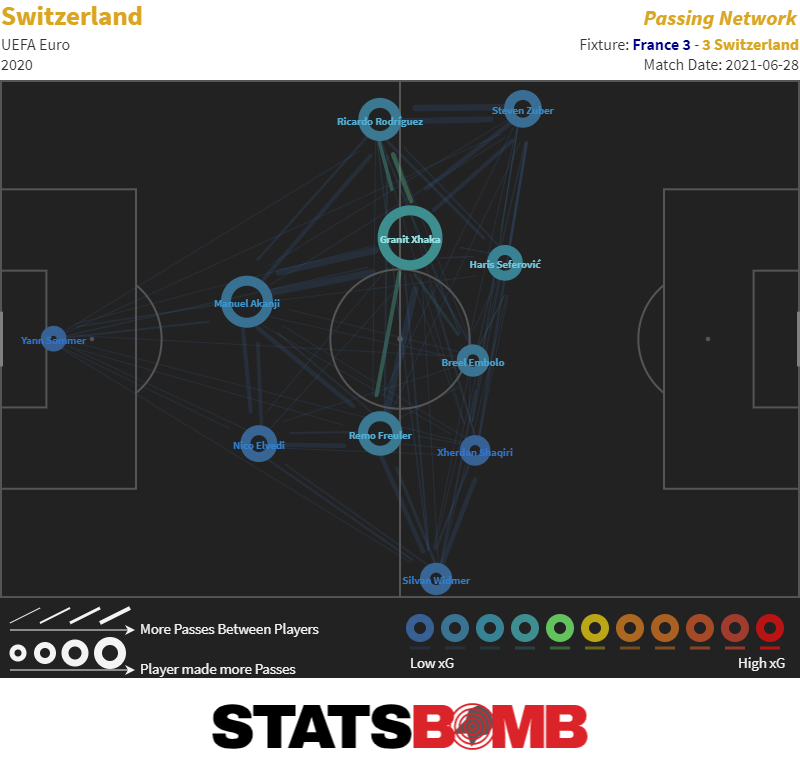
Defensive Approach
Switzerland have so far adapted their defensive approach for each opponent, though they do appear to show a preference for defending in the middle and defensive third.
They pressed from the front against Italy, but the plan backfired and that, alongside other factors, may have put Vladimir Petković off trying a similar approach versus Spain. Against Turkey and then France, they were much happier to sit off the opposition initially and then press more aggressively in the middle third.
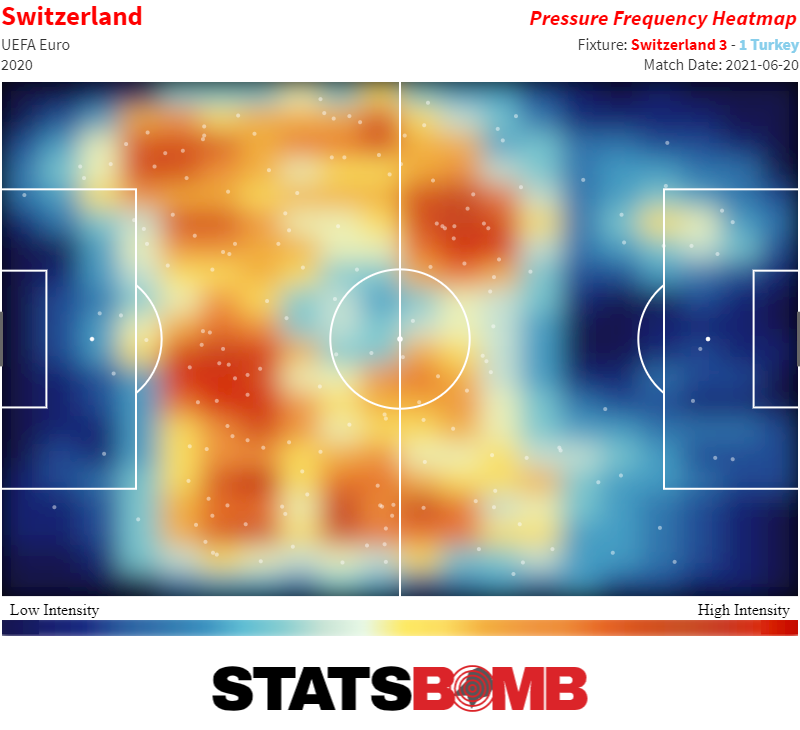
What To Expect
We’ve identified several trends we expect to persist on Saturday’s quarter-final, as well as potential weaknesses on both sides. Will Spain keep Switzerland penned into their half? Will Switzerland be able to transition effectively and create dangerous chances as other teams have? Will Spain have to resort to crosses to gain entry to the box again?
That’s just an overview of the various insights that can be drawn out of StatsBomb IQ. Teams and federations continue to source match-winning insight out of our analytics platform and data to give them an edge on matchday. For a full demo of the platform, contact us today.
